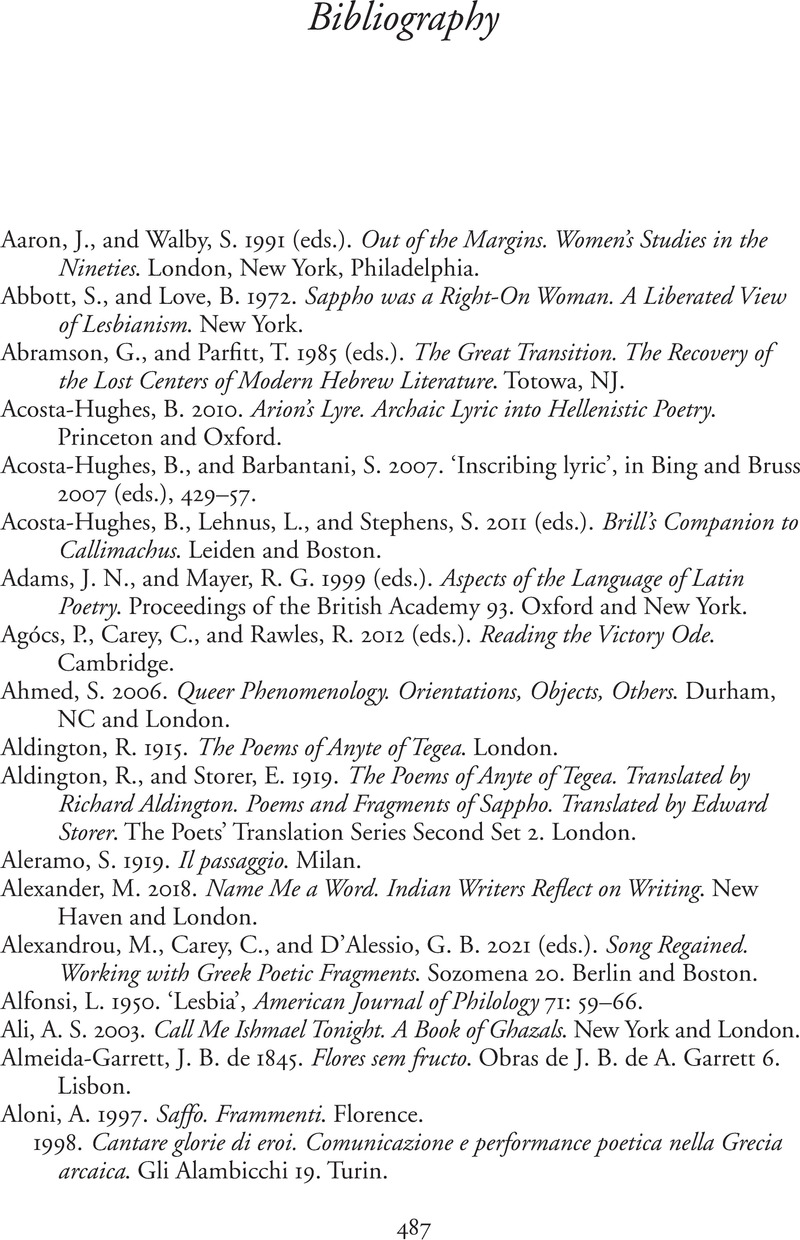Book contents
- The Cambridge Companion to Sappho
- Cambridge Companions to Literature
- The Cambridge Companion to Sappho
- Copyright page
- Contents
- Plates
- Contributors
- Abbreviations
- Introduction
- Part I Contexts
- Part II Poetics
- Part III Transmission
- Part IV Receptions
- Bibliography
- General Index
- Index to the Reception of Sappho
- Plate Section
- References
Bibliography
Published online by Cambridge University Press: 09 April 2021
- The Cambridge Companion to Sappho
- Cambridge Companions to Literature
- The Cambridge Companion to Sappho
- Copyright page
- Contents
- Plates
- Contributors
- Abbreviations
- Introduction
- Part I Contexts
- Part II Poetics
- Part III Transmission
- Part IV Receptions
- Bibliography
- General Index
- Index to the Reception of Sappho
- Plate Section
- References
Summary

- Type
- Chapter
- Information
- The Cambridge Companion to Sappho , pp. 487 - 546Publisher: Cambridge University PressPrint publication year: 2021



